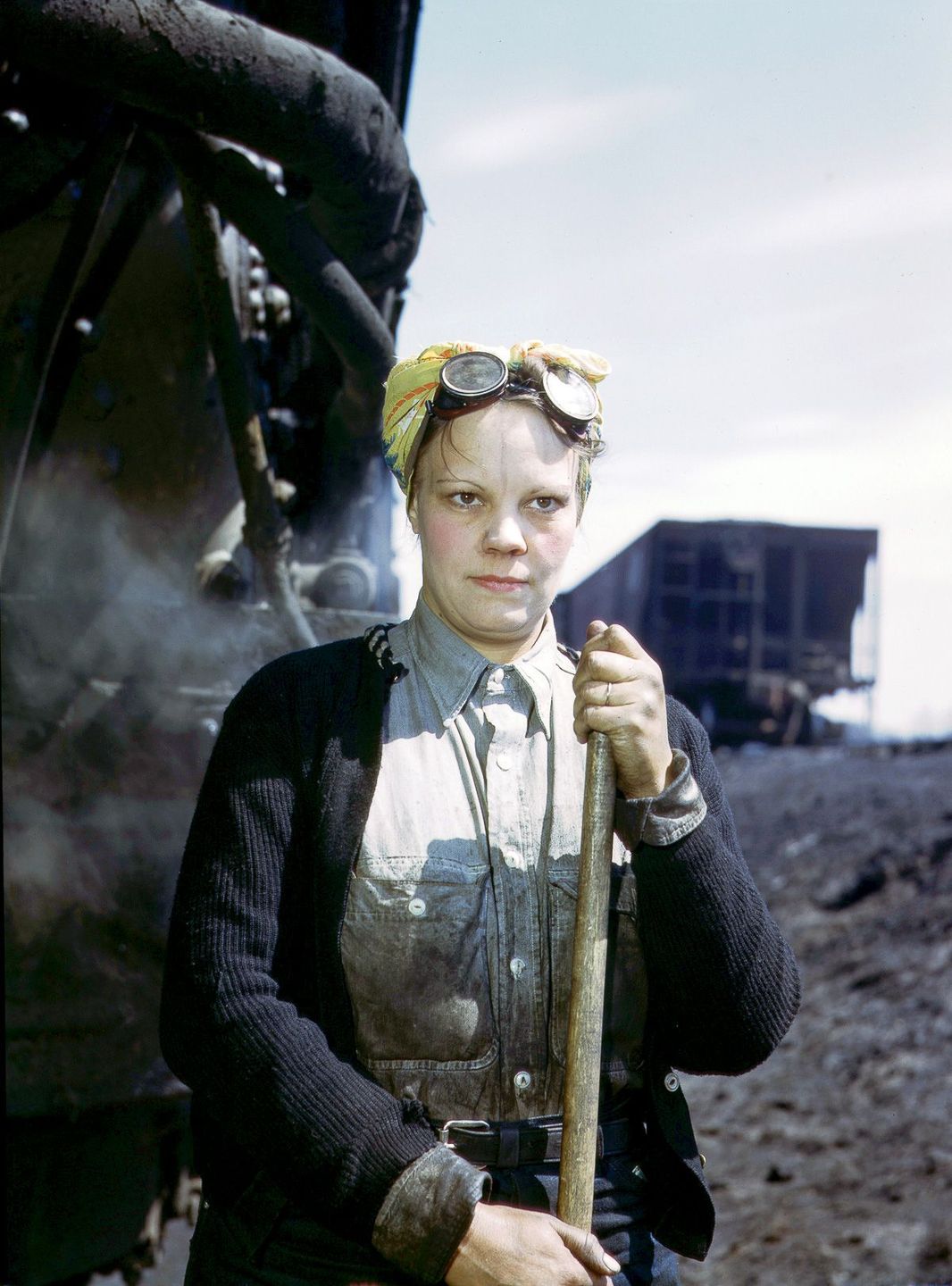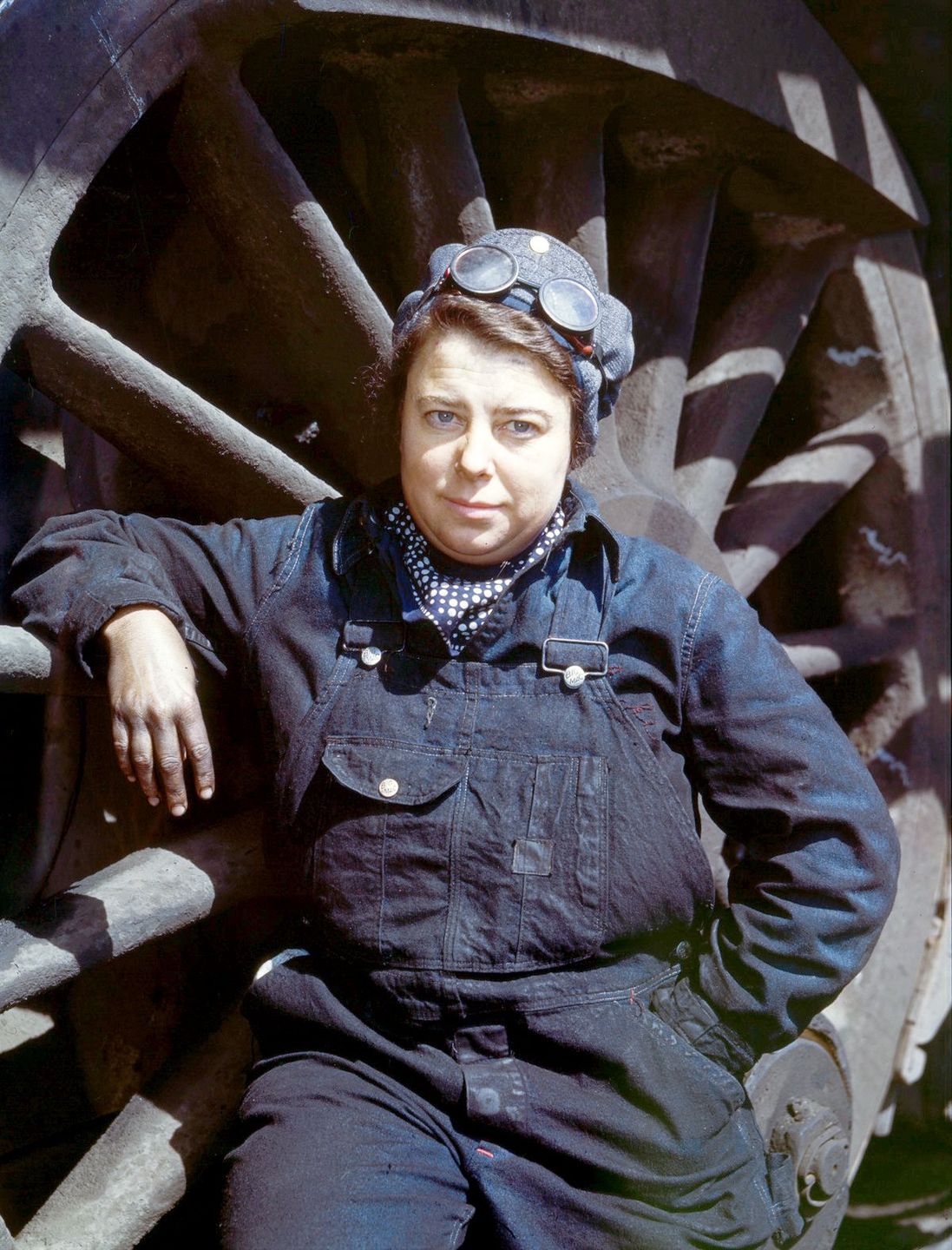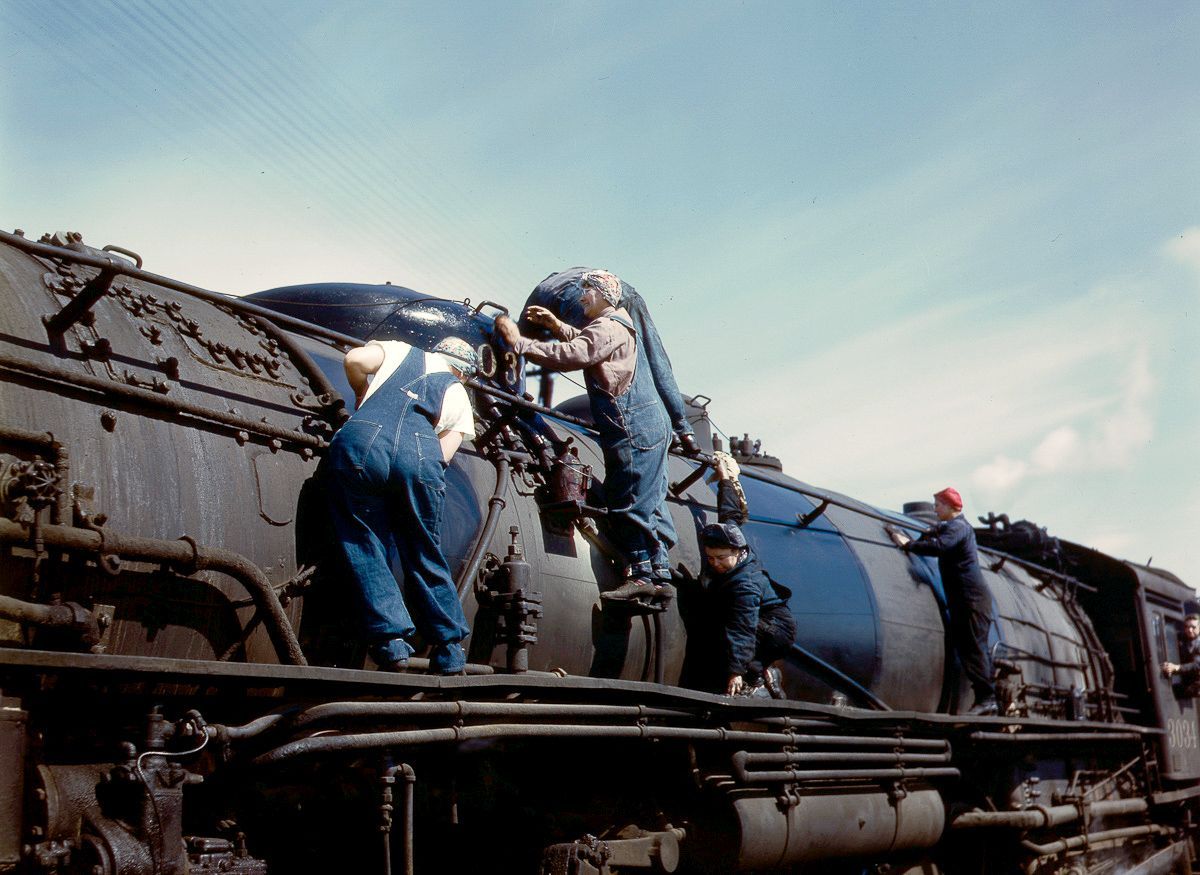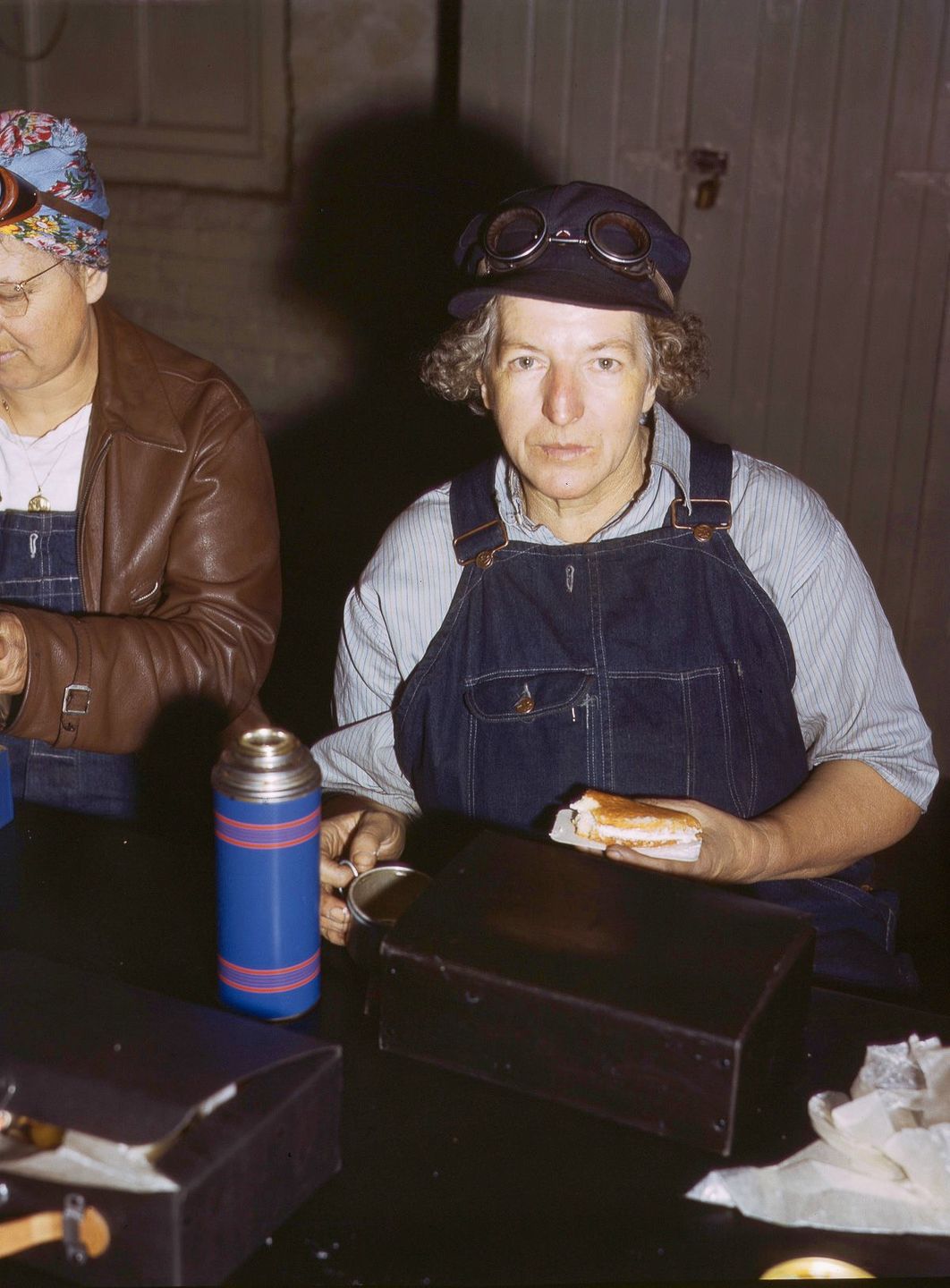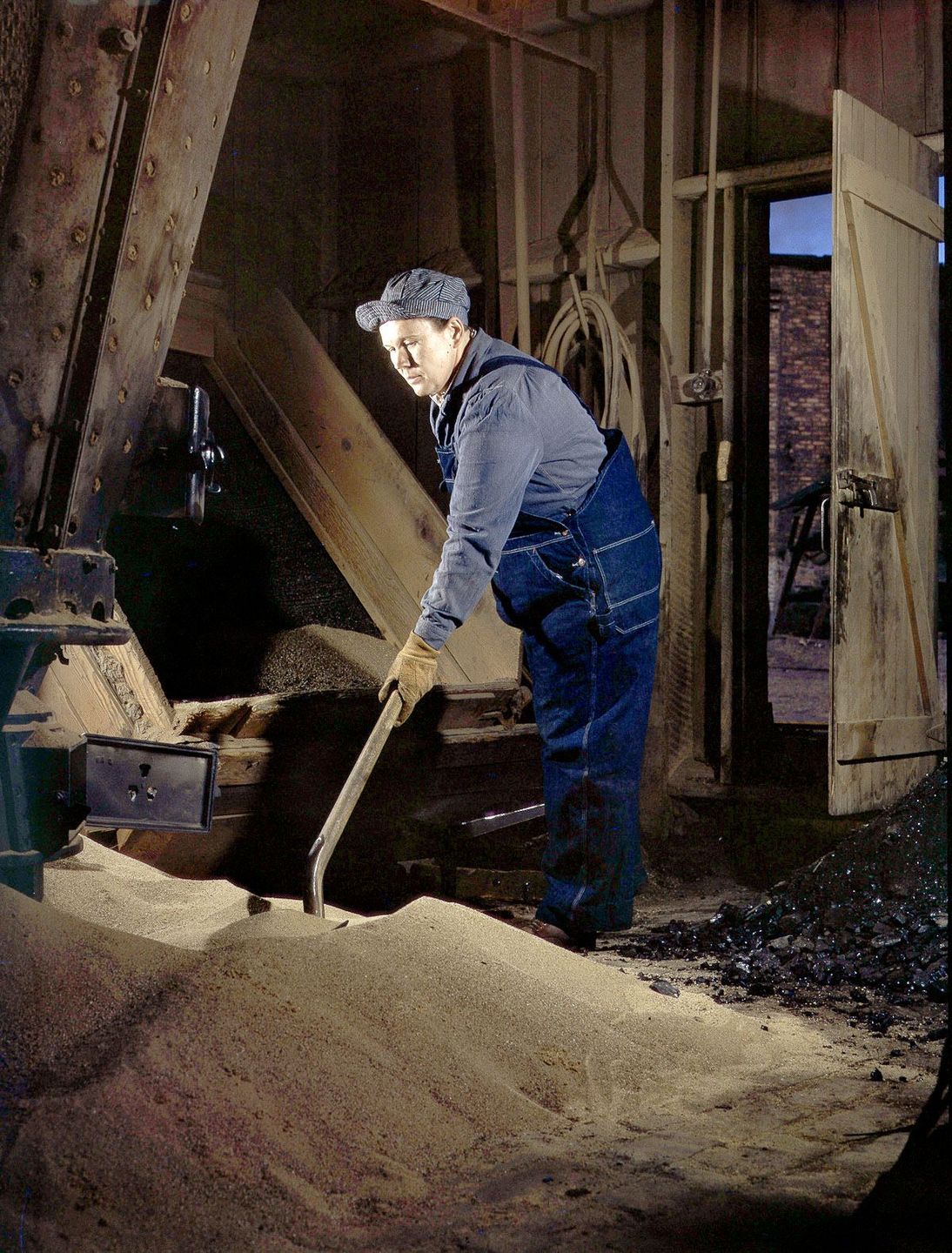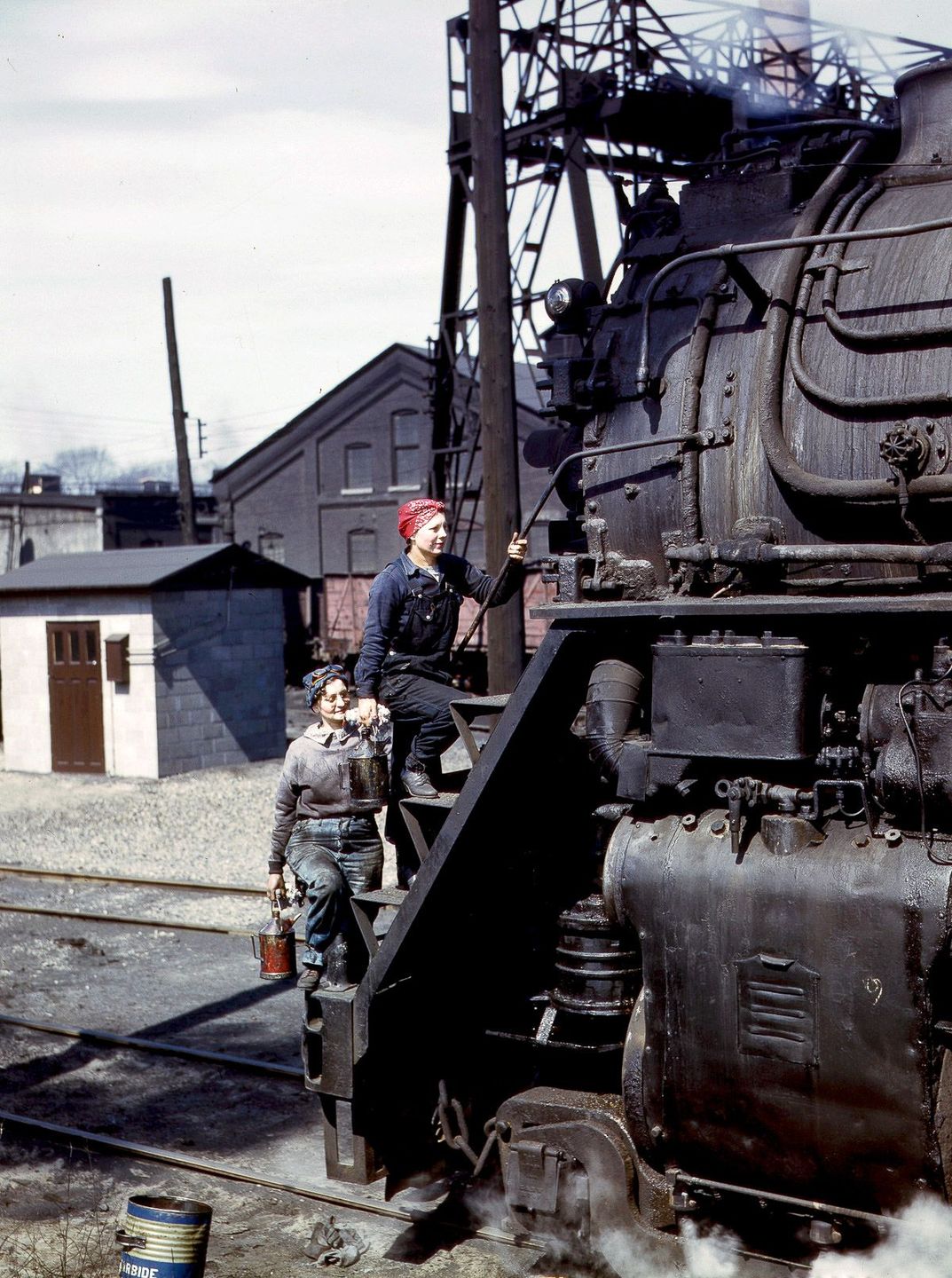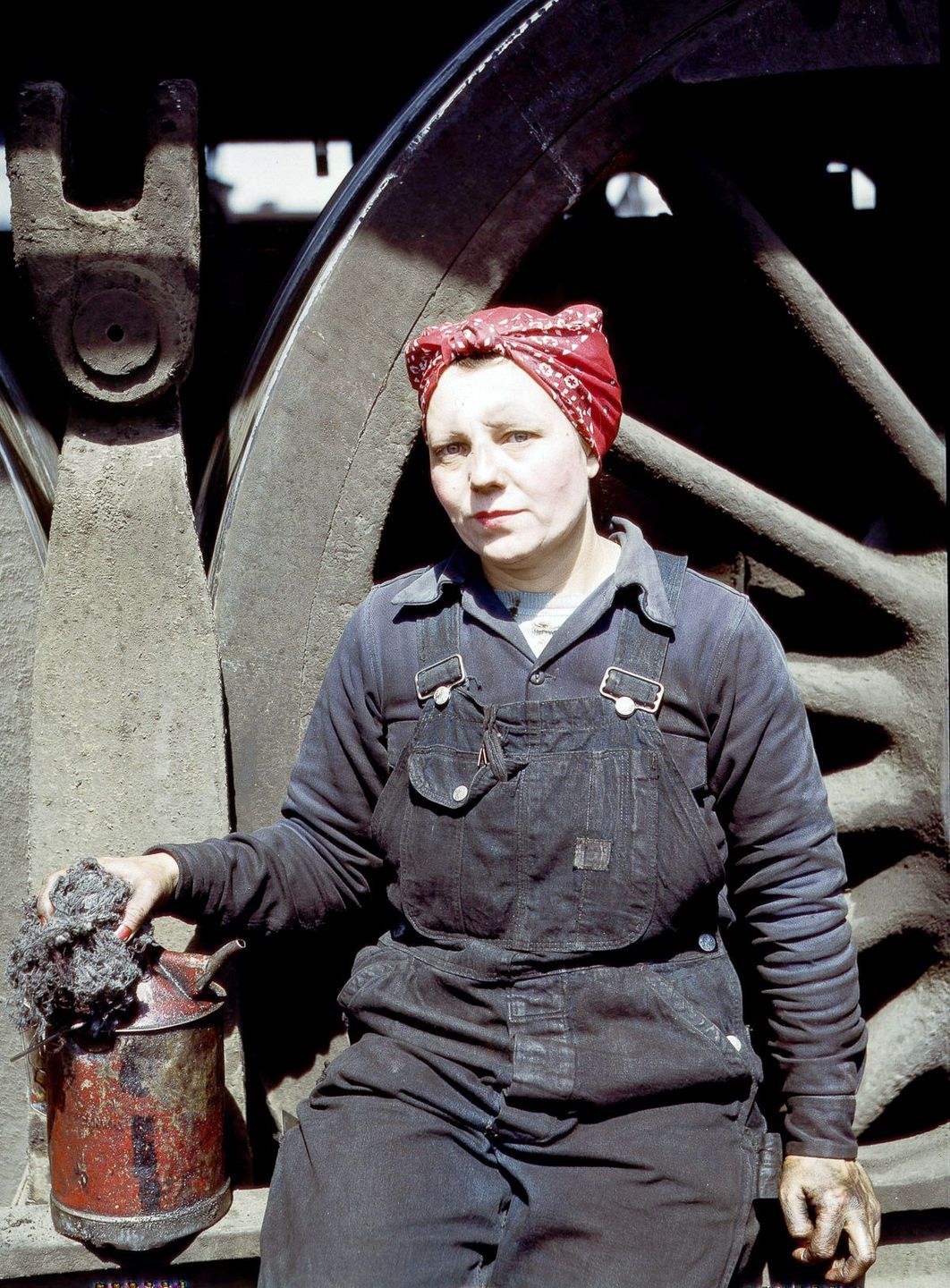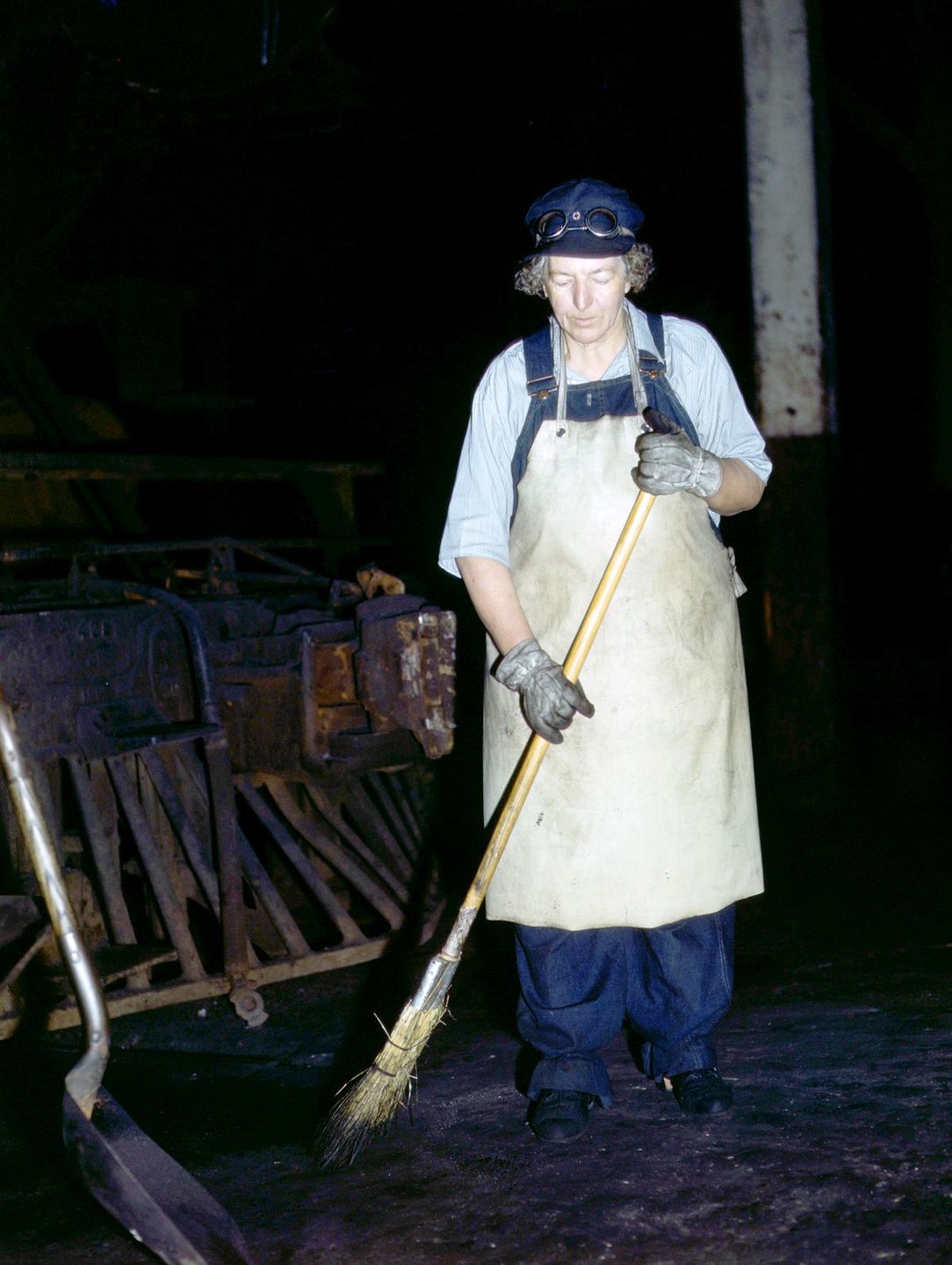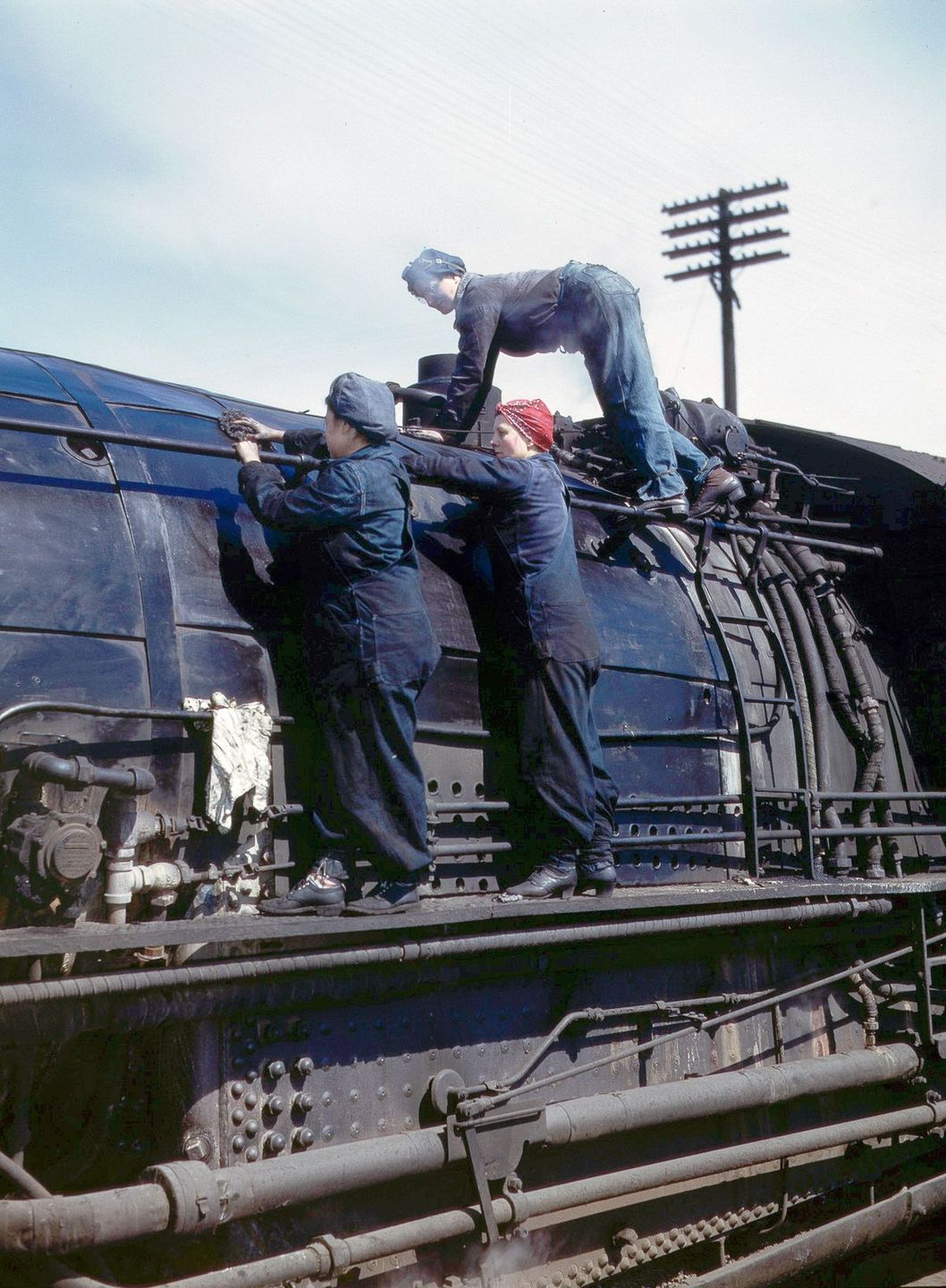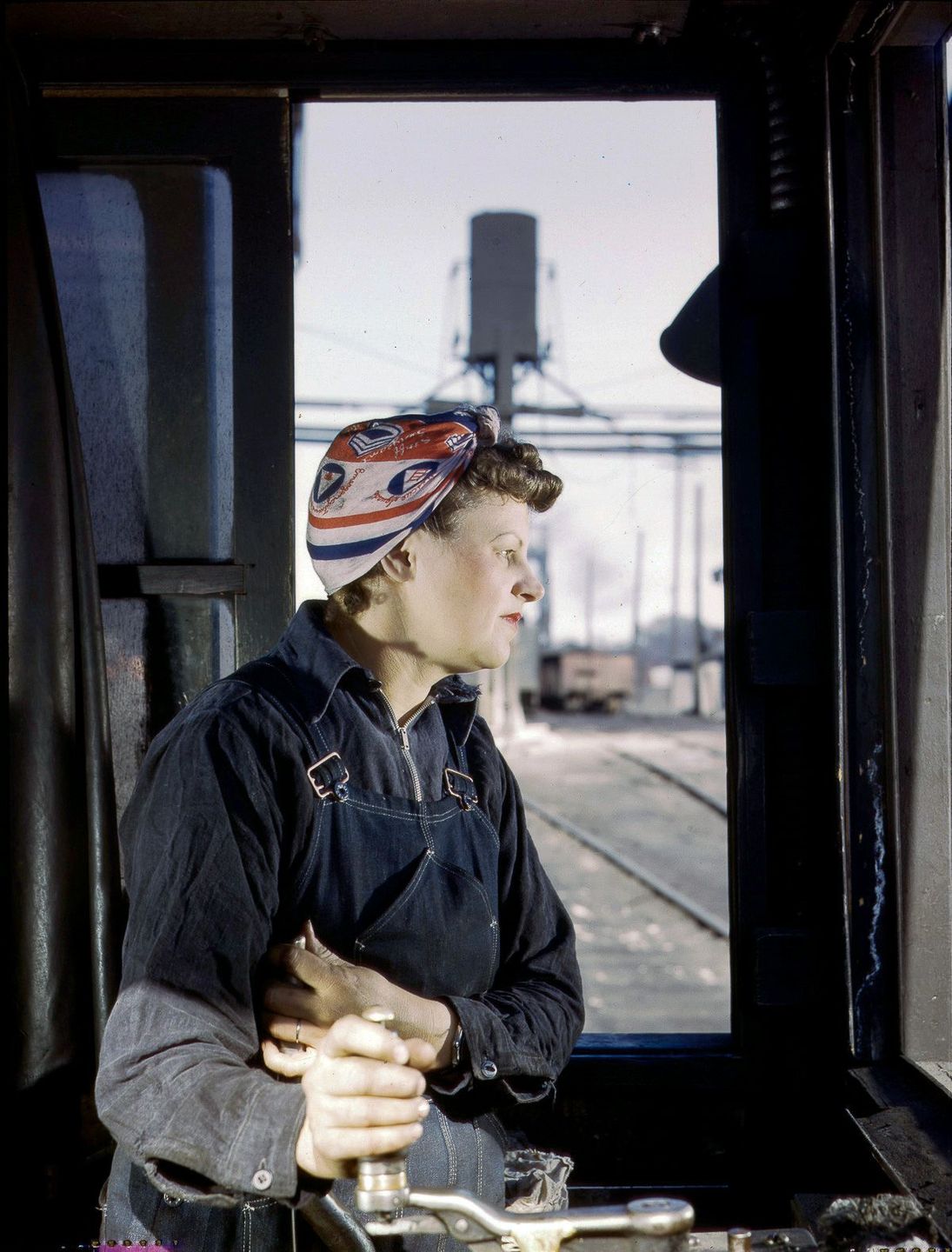In 1943, Jack Delano (born Jacob Ovcharov in Ukraine, August 1, 1914 – died Puerto Rico, August 12, 1997) was despatched by the Office of War Information to record life at the Chicago & North Western Railroad roundhouse in Clinton, Iowa.
Delano moved to the US with his family in 1923. After graduating from the Pennsylvania Academy of Fine Arts, he bought a camera in Europe and, realising there was more money to be had in photography than oil painting, produced a study of coal mining conditions in Schuylkill County, Pennsylvania, for the Federal Art Project. Soon after, Delano received a telegram from Farm Security Administration director Roy Stryker saying that there was a job opening at $2,300 a year as photographer in his outfit. Did he want to work with the likes of Dorothea Lange, Walker Evans and Arthur Rothstein? “Well, I was never more interested in anything in my life,” Delano recalled.
Roy gave you the feeling that he knew more about everything that you did and, above all, he knew more about America that you did, by far. And that’s one of the things that I loved about Roy and one of the things I got most from him was a feeling about the United States, about America. This enthusiasm and love for the detail and the deeper meaning of everything American was something that he must have transmitted to everybody.
“I’ve always felt that photographs for me were primarily for reproduction and for mass distribution. A photograph is something for lots and lots of people to see,” said Delano. “I respect people like Paul Strand and others who make beautiful prints for museums and exhibitions and I think there is . . . that kind of photography is one thing and my kind of photography is another thing.”
Delano photographed infrastructure and rolling stock, but he was no better than when recording the people who did the work. His portraits of the women employed to keep the trains going are glorious and big in scale, emphasising the workers’ strength of arm and spirit.
Like Paul Strand, Delano possessed “a real respect for the thing in front of him”.
“To do justice to the subject has always been my main concern,” Delano wrote in his autobiography Photographic Memories. “Light, color, texture and so on are, to me, important only as they contribute to the honest portrayal of what is in front of the camera, not as ends in themselves…
“I thought the camera could be a means of communicating how I felt about the problems facing the country and that therefore I could perhaps influence the course of events. I thought I could portray ordinary working people in photographs with the same compassion and understanding that Van Gogh had shown for the peasants of Holland with pencil and paintbrush.”
A train is approaching us!
The glare of the headlight
With a WHOOSH of thunder as it flies by us.
The brakeman gets down from the cupola and watches it go by
Two red lights and a white one pass us
The white one waves up and down.
We answer
Then back again to the drone
I throw a cigarette out of the window
It whirls off in the backwash scattering sparks wildly like fireworks
The blackness again.
– Things I Cannot Photograph, Jack Delano
Would you like to support Flashbak?
Please consider making a donation to our site. We don't want to rely on ads to bring you the best of visual culture. You can also support us by signing up to our Mailing List. And you can also follow us on Facebook, Instagram and Twitter. For great art and culture delivered to your door, visit our shop.
